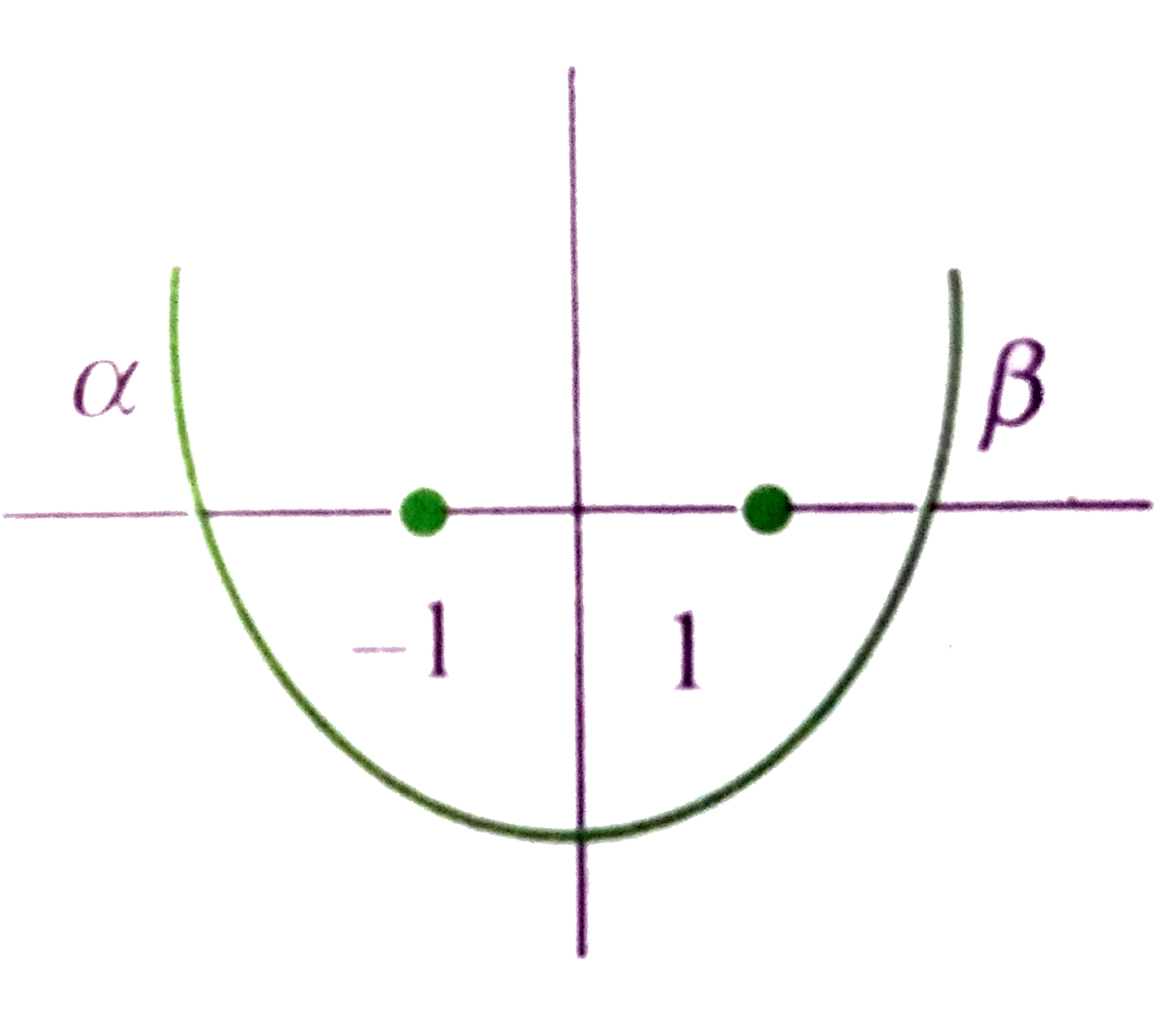Let a,b,c be real. If ax2+bx+c=0 has two real roots αandβ,whereα⟨−1andβ⟩1 , then show that 1+ca+∣∣∣ba∣∣∣<0
Let f(x)=x2+bax+ca .
Accounting to the questions, we have the following graph.
From the graph.
f(−1)<0andf(1)<0
⇒1+ca−ba<0and1+ca+ba<0

⇒1+ca+∣∣∣ba∣∣∣<0 .
Topper's Solved these Questions
- BOOK - CENGAGE ENGLISHCHAPTER - THEORY OF EQUATIONSEXERCISE - CONCEPT APPLICATION EXERCISE 2.139videos
THEORY OF EQUATIONS
- BOOK - CENGAGE ENGLISHCHAPTER - THEORY OF EQUATIONSEXERCISE - Single Correct Answer Type : Exercise89videos
THEORY OF EQUATIONS
- BOOK - CENGAGE ENGLISHCHAPTER - THEORY OF EQUATIONSEXERCISE - CONCEPT APPLICATION EXERCISE 2.118videos
THEORY OF EQUATIONS
- BOOK - CENGAGE ENGLISHCHAPTER - STRAIGHT LINESEXERCISE - ARCHIVES (NUMERICAL VALUE TYPE)1videos
STRAIGHT LINES
- BOOK - CENGAGE ENGLISHCHAPTER - THREE DIMENSIONAL GEOMETRYEXERCISE - All Questions294videos
THREE DIMENSIONAL GEOMETRY
Similar Questions
If a, b, c are real if ax2+bx+c=0 has two real roots α,β where a<−1,β>1 then
View SolutionLet a,b,c ∈Randa>0. If the quadratic equation ax2+bx+c=0 has two real roots αandβ such that α>−1andβ>1 , then show that 1+∣∣∣ba∣∣∣+ca>0
View SolutionGiven that ax2+bx+c=0 has no real roots and a+b+c<0, then c≠0 b. c<0 c. c>0 d. c=0
View SolutionGiven that ax2+bx+c=0 has no real roots and a+b+c<0, then c≠0 b. c<0 c. c>0 d. c=0
View SolutionIf the equation ax2+bx+c=0(a>0) has two real roots αandβ such that α<−2 and β>2, then which of the following statements is/are true? (a)a−|b|+c<0 (b)c<0,b2−4ac>0 (c) 4a−2|b|+c<0 (d) 9a−3|b|+c<0
View SolutionIf ax2+bx+c=0 has no real roots and a, b, c ∈ R such that a+c>0, then
View SolutionIf ax2+(b−c)x+a−b−c=0 has unequal real roots for all c∈R,then b<0<a b. a<0<b c. b<a<0 d. b>a>0
View SolutionIf ax2+bx+c=0,a,b,c∈R has no real zeros, and if c<0 , then which of the following is true? (a) a<0 (b) a+b+c>0 (c)a>0
View SolutionIf ax2+bx+c=0,a,b,c∈R has no real zeros, and if c<0 , then which of the following is true?
View SolutionIf the equation ax2+2bx−3c=0 has no real roots and (3c4)<1+b, then c<0 (b) c>0 c=0 (d) None of these
View Solution

